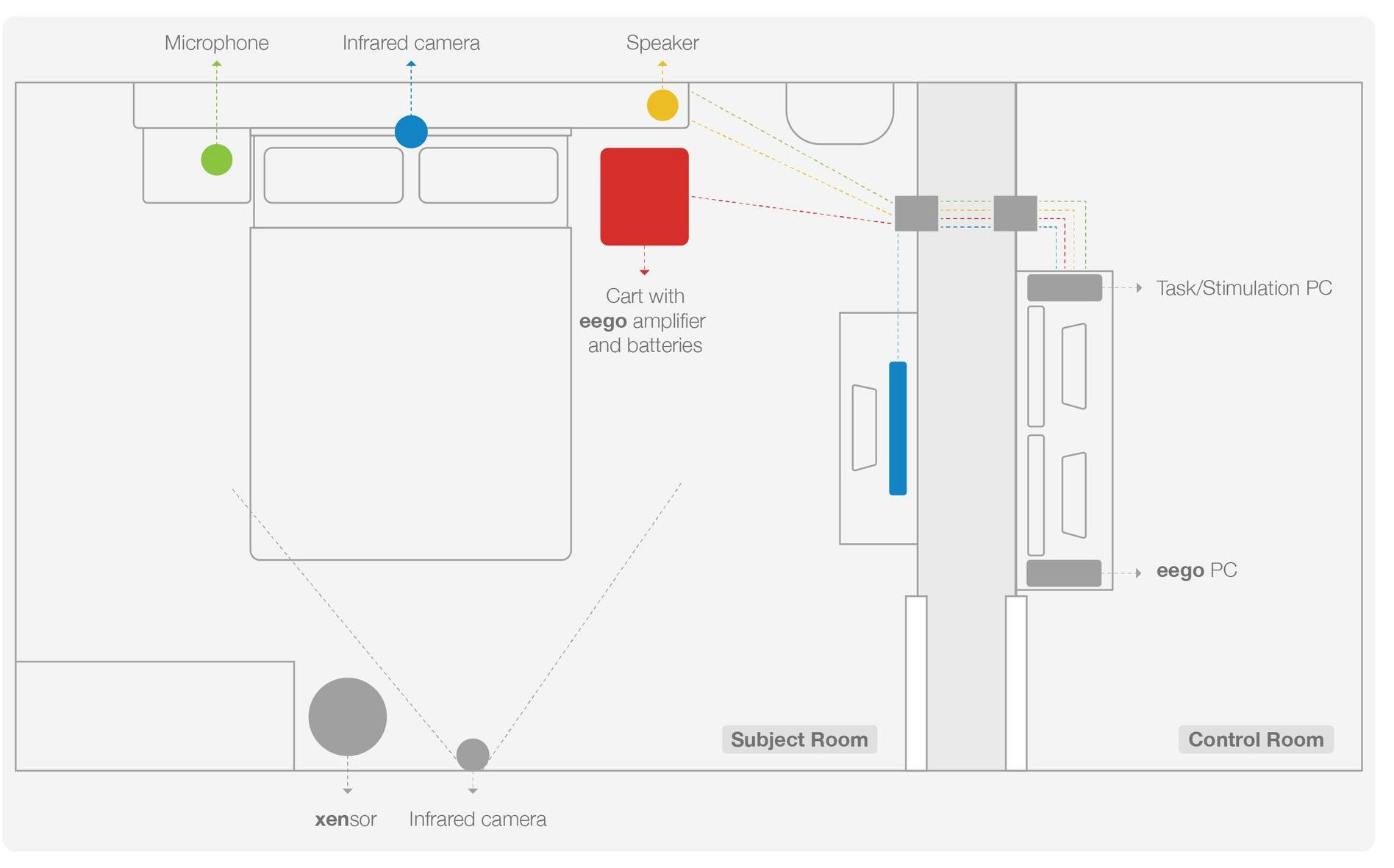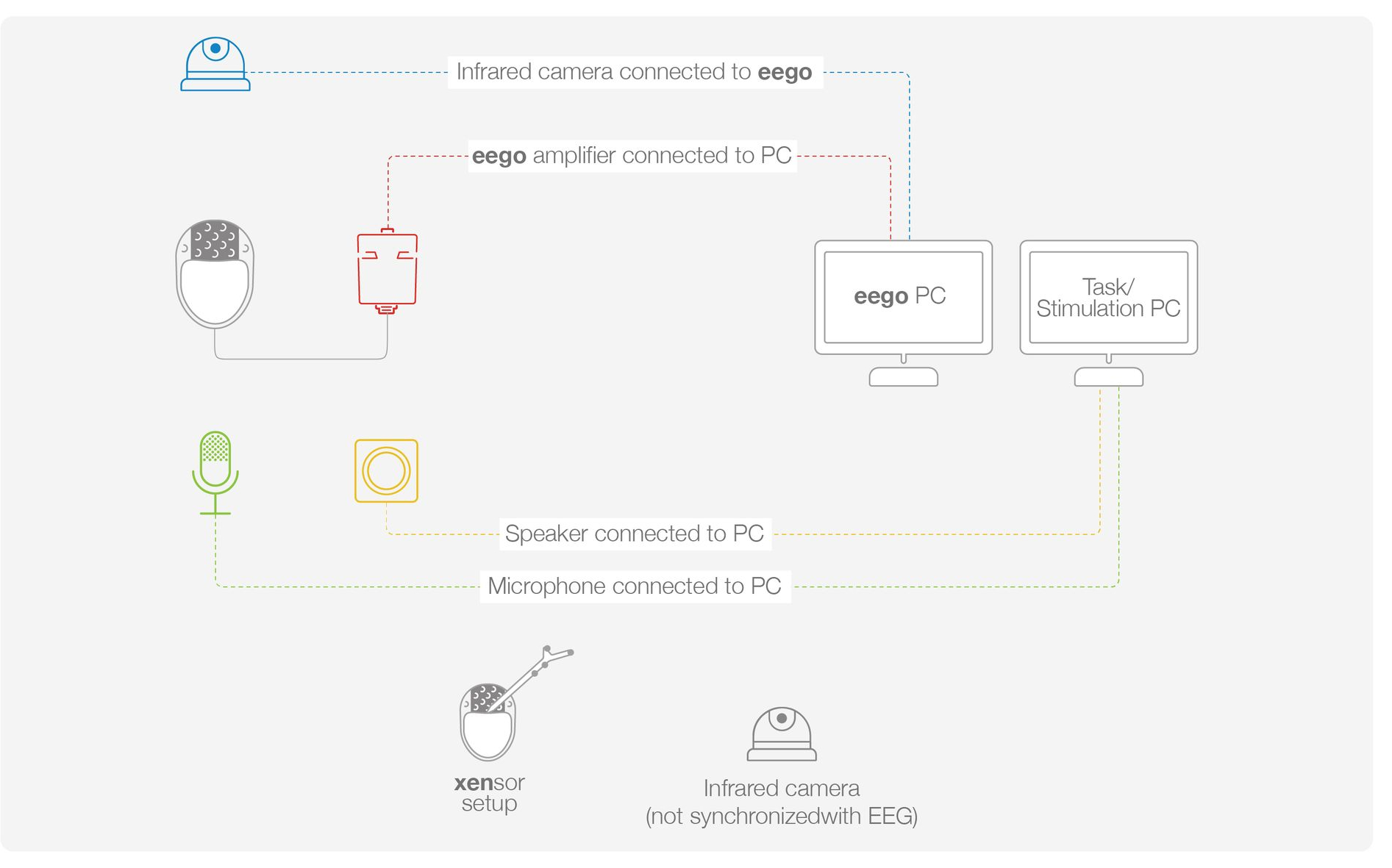Sleep Research
Electroencephalography (EEG) is a widely used method in sleep research to monitor and study brain activity during different stages of sleep. It helps researchers understand the mechanisms of sleep, sleep disorders, and the role of sleep in health and cognitive functions. By capturing electrical signals from the brain, EEG provides real-time data on the neural patterns that occur during various phases of sleep, from light sleep to deep sleep and REM (Rapid Eye Movement) sleep.
Setup Requirements and Technological Challenges
A typical EEG setup for sleep studies includes several key components:
EEG Sensors and Electrodes
Placed on the scalp to capture detailed information about different brain regions during sleep cycles.
Signal Amplification
Amplifiers ensure that the low-frequency, low-amplitude EEG signals of sleep stages are accurately captured.
Polysomnography (PSG)
Sleep studies often combine EEG with other physiological measures such as eye movements (EOG), muscle activity (EMG), heart rate (ECG), and repiration patterns to form a complete polysomnographic profile of the sleeping subject.
Signal Processing and Sleep Stage Classification
EEG is critical for classifying sleep stages, which are generally divided into Non-Rapid Eye Movement (NREM) sleep and REM sleep, and additional subcategories. Each stage has characteristic EEG waveforms, such as alpha, theta, and delta waves.

While EEG is highly effective in sleep research, several technical challenges must be considered:
Signal Artifacts
e.g from movement, environmental noise, and muscle activity. Advanced signal processing techniques are needed to ensure clean and interpretable data..
Electrode Comfort and Sleep Quality
Amplifiers ensure that the low-frequency, low-amplitude EEG signals of sleep stages are accurately captured.
Polysomnography (PSG)
Overnight recordings can be uncomfortable for participants, especially if natural movements are restricted by electrodes and wires. Balancing data quality with participant comfort is a key concern in sleep research.
Long-term Data Collection
The reliability of the EEG equipment and the stability of electrode contact are crucial for long-term recordings.

Our Solutions
Showcases and Publications


Medial temporal lobe functional network architecture supports sleep-related emotional memory processing in older adults
Chappel-Farley, M. G., et al.
Read More

